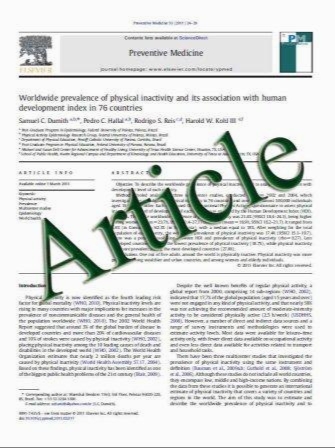Laryngeal eVects of nasal allergen provocation in singers with allergic rhinitis
- نوع فایل : کتاب
- زبان : انگلیسی
- مؤلف : Monique M. L. Verguts · Anita Eggermont ·Wivine Decoster · Felix I. C. R. S. de Jong · Peter W. Hellings
- چاپ و سال / کشور: 2011
Description
In spite of our recent insight into nasobronchial interaction mechanisms in allergic airway disease, the association between allergic rhinitis and voice complaints remains obscure. To evaluate the eVects of nasal allergen provocation and seasonal grass pollen exposure on subjective and objective laryngeal parameters in singers with and without allergic rhinitis, an observational case control study was conducted. Prior to the pollen season, six grass pollen allergic and six non-allergic semiprofessional singers were exposed to nebulized sham solution and grass pollen extract (HAL°) in rising concentrations. After 3 min, 60 min and 24 h, nasal and laryngeal complaints were evaluated by the use of a visual analog scale (VAS). Laryngeal parameters like voice appearance (video stroboscopic images), voice range proWle and subjective (GRBAS) and objective (jitter, shimmer, H/N, DSI) voice quality were evaluated before provocation, after 60 min and 24 h. During the pollen season, the allergic singers were re-evaluated. Results showed that in allergic singers both nasal (TNS of 4.0 § 2.4 vs. 0.0 § 0.0, p < 0.05) and laryngeal complaints (TLS of 1.4 § 1.1 vs. 0.0 § 0.2, p < 0.05) were induced at 3 min after the provocation. The induced laryngeal complaints were the feeling of laryngeal irritation, secretions and globus. No change in voice quality or stroboscopy score was measured. During the pollen season, laryngeal complaints were present (TLS of 2.4 § 2.4) in allergic singers, without evidence for objective voice and laryngeal changes. In conclusion, we here demonstrate the rapid induction of laryngeal complaints in allergic singers by nasal allergen provocation and during the pollen season. There was no subject reported or investigator measured change in voice quality. No change in stroboscopy score was measured
Eur Arch Otorhinolaryngol (2011) 268:419–427, Received: 16 August 2010 / Accepted: 25 October 2010 / Published online: 12 November 2010 © Springer-Verlag 2010


